How to tie shoelaces: making the first knot
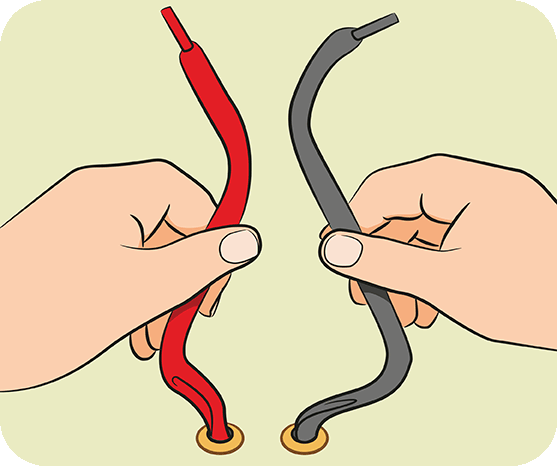
Tying shoelaces is an important part of getting dressed. The ‘bunny ears’ method is one way of tying shoelaces. The first step is to take a shoelace in each hand.

Cross the black lace over the red lace halfway up the laces.
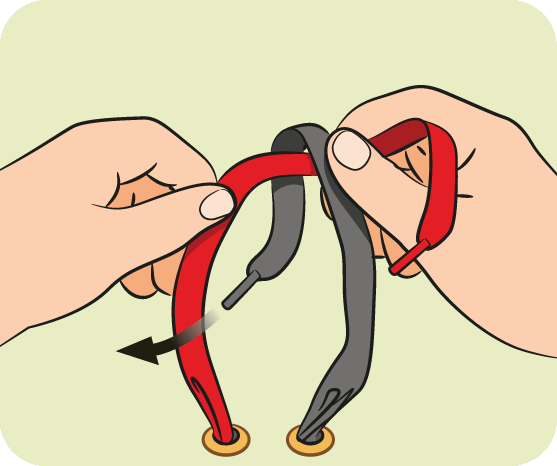
Take the end of the black lace and put it over the red lace. Now poke it underneath the red lace.
How to tie shoelaces: making the ‘bunny ears’
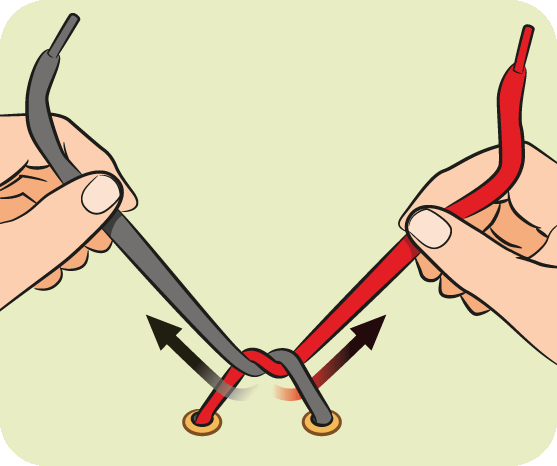
Hold on to the ends of the red and black laces and pull tight to make a knot. The knot should be close to the shoe.
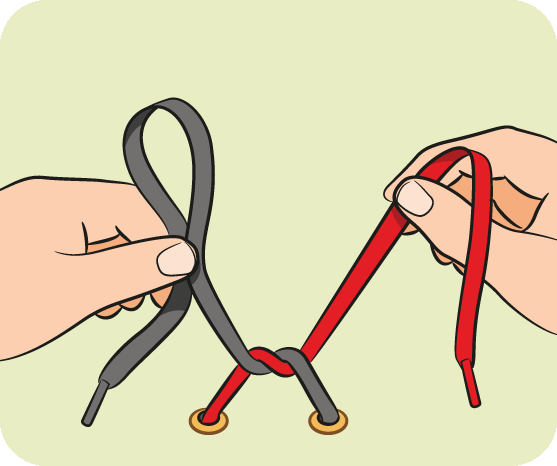
Take the black lace and make a small loop, or ‘bunny ear’. This black bunny ear should have a long tail.
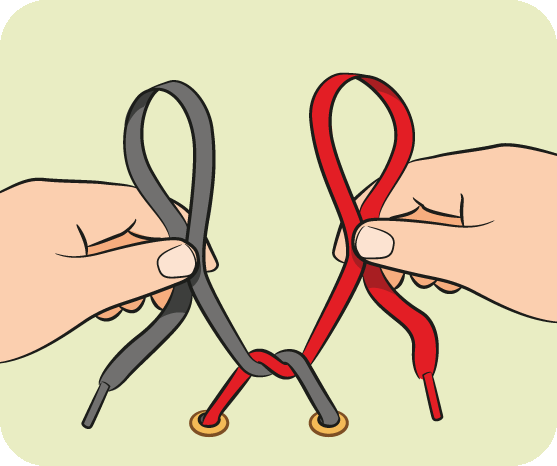
Take the red lace and make a small loop, or ‘bunny ear’. This red bunny ear should have a long tail.
How to tie shoelaces: tying the ‘bunny ears’ in a knot
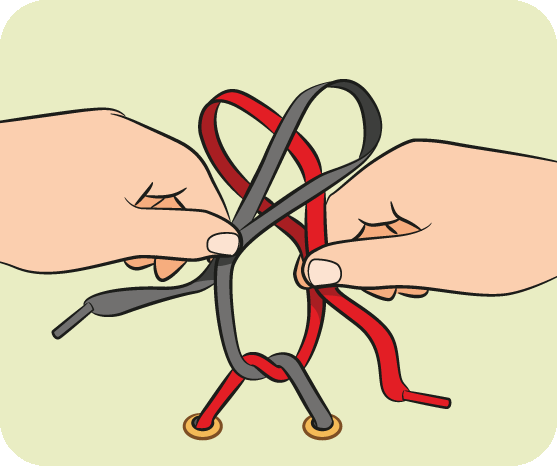
Cross the middle of the black bunny ear over the middle of the red bunny ear.
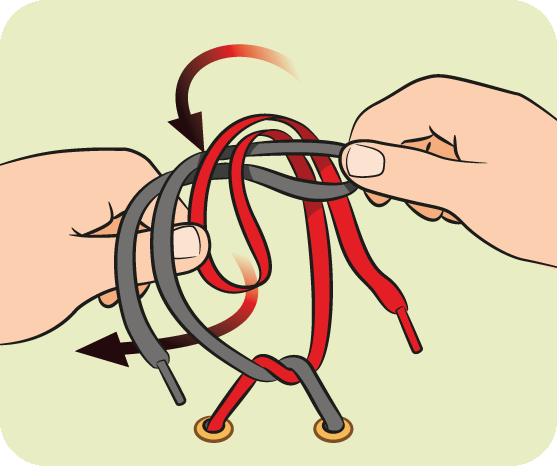
Take the top of the red bunny ear and put it over the black bunny ear. Now poke it through the hole.
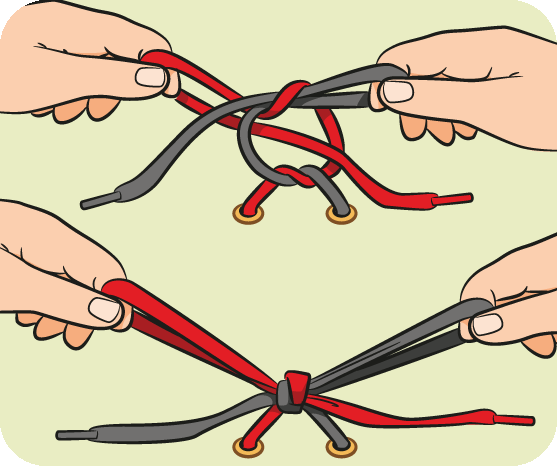
Put your fingers inside the ends of the bunny ears, then hold on and pull tight. You’ve now tied the loops in a knot. The shoelaces are tied.